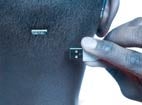On first glance, the smart home category seems to have little to do with business. Of course, home offices will be impacted, so a sort of direct connection exists. But, in the overview, it seems safe to assume that anything that happens between consenting electronic devices in the privacy of their own homes is nobody else’s concern.
That libertarian concept is not quite the case, however. The sheer size of the potential market means that it matters in terms of the overall evolution of the IT and telecommunications industries. Hundreds of millions of homes are out there, and each contains dozens and dozens of potential endpoints, from thermostats to smart door locks to smart toilets.
The bookend point is that it currently is a hugely immature category. Berg Insight released research last month that suggests how fragmented the smart home category is:
North America is the most advanced region in the world for smart home solutions with an installed base of 3.5 million systems at the end of 2012. An estimated 0.7 million of these were multifunction or whole-home systems whereas 2.8 million were point solutions designed for one specific function such as climate control or security. As some homes have more than one smart system in use, the installed base represents a total of around 2.9 million smart homes.
The press release, which cites “very strong” growth in the region during the first nine months of 2013, paints a picture of a category that has not yet solidified. It is as if a young automobile industry was selling both complete cars and individual parts to consumers, assuming they would assemble the vehicle themselves.
Putting together the potential size of the industry and its immaturity means that great attention must be paid to the sector. Along those lines, there seems to be a good deal of activity among smart home vendors. At GigaOm, Stacey Higginbotham explores four smart home hub approaches: SmartThings, Iris (from Lowes), Revolv and Staples Connect. She looks at price, whether a subscription is required, the operating system the app rests on, and what devices are supported by the hub. She finishes with some general comments that reinforce the idea that the category still is largely unstructured.
The number of systems and devices in a home that can be made “smart” (i.e., given connectivity) is stunning. LiveScience offers a slideshow that hits the tip of the iceberg. The Beddit sleep sensor, for instance, monitors “heart rate, breathing, snoring and movement” and can provide clues as to why, for instance, a person wakes up every morning at 2 AM. Another example is the Goji smart lock, which tracks who opens it, snaps photos when somebody knocks, and can be programmed to open on command from somebody else’s smartphone. Mashable offers a similar list of smart home gadgets.
MarketsandMarkets has released research suggesting that the smart home market will be worth $22.4 billion by 2020, a compound annual growth rate of 17.62 percent. Perhaps more important than that growth rate and total value, as impressive as they are, is the impact the category will have on the general development of the machine-to-machine (M2M) sector and the overall evolution of IT and telecommunications.



